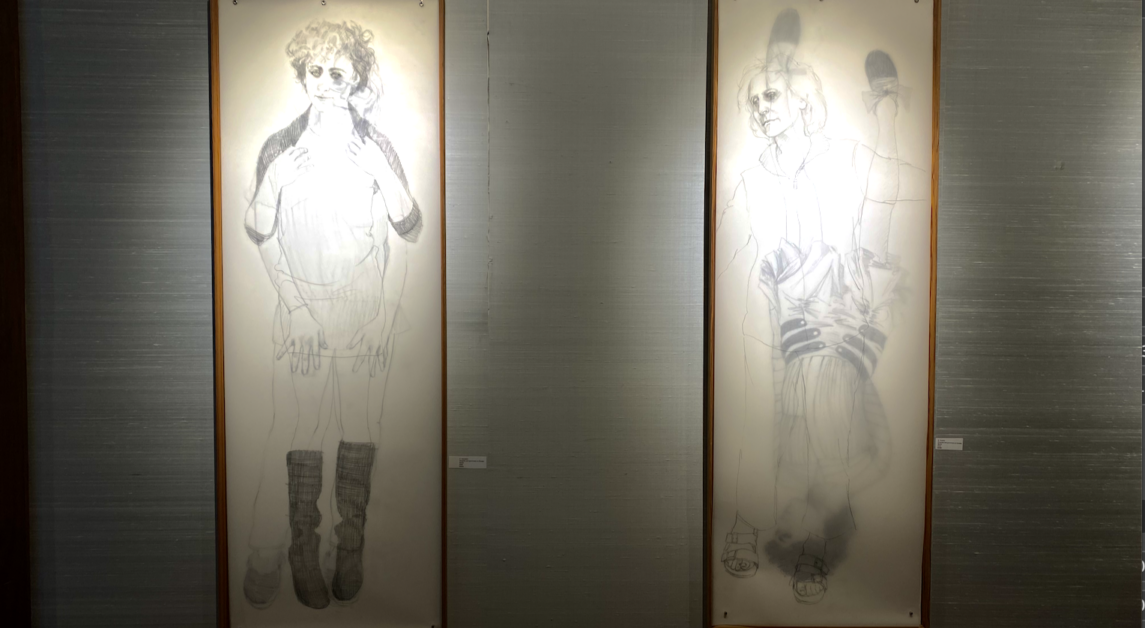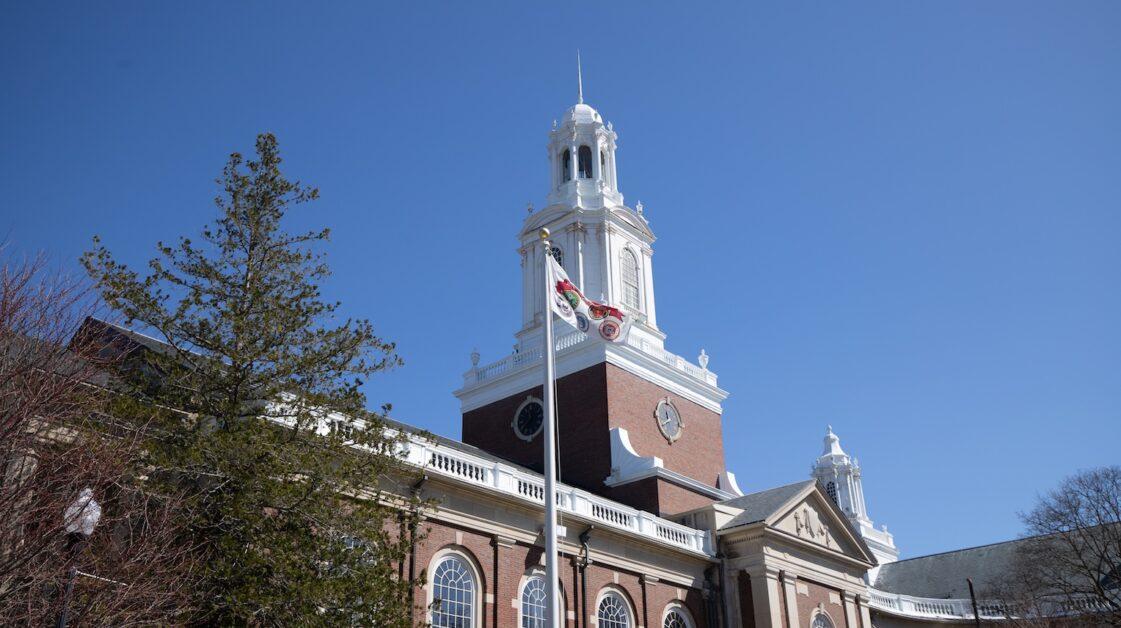Visitors gathered in the living room of the Isabella Stewart Gardner Museum on Thursday for an intimate conversation with contemporary artist and current Boston-artist-in-residence Steve Locke. Holding a cup of steaming tea, Locke walked in with a smile, and after giving a few hugs, proceeded “to spill tea” on his experience serving as the 2016 artist-in residence at the museum, discuss his current exhibition on the museum’s facade, Three Deliberate Grays for Freddie (A Memorial for Freddie Gray), and drop hints about upcoming projects.
“I have become sort of the adopted house cat of this museum,” Locke said with a laugh. “I never leave.”
Locke began his pilgrimages to ISG as a college student, when he attended Boston University. “We used to smoke marijuana and come to Gardner museum and just like wander,” he said coyly. “That was my introduction to the collection. I do not recommend that, the guards are much more attune to people touching things now. I don’t do that anymore, thank goodness.”
When his mother died in 2004, Locke came back to ISG to mourn her.
“Time is sort of pregnant in the Gardner museum,” he said. “It starts and stops in this very interesting way. You have this sort of eternal present of the collection and then the living present of the garden. And plus you can walk around here and cry and everyone just thinks you are overwhelmed by the art, which is great.”
But serving as the artist-in-resident in 2016 was what really hooked Locke to the museum.
“I got to live here, wake up here, and go to sleep here,” he said. “I got to watch the army of people who make this place run. The people with the tiny brushes dusting and the restorers. Not to mention the whole staff that make that garden happen. To actually see that in operation was magical, it was like watching some sort of ballet every morning.”
Locke’s time at ISG in 2016 had a profound influence on his work. In particular, it sparked his obsession with textiles. During his residency, the museum was in the process of restoring the silk ceiling of the Raphael Room, and watching the restoration take place helped inspire the installation that currently dominates the museums front facade, Three Deliberate Grays for Freddie (A Memorial for Freddie Gray).
At first glance, viewers see nothing more than three rectangles of color. But the installation should not be compared to a Rothko, the three colors combine to form an abstract portrait of Freddie Gray, a 25 year old black man who died in 2015 while in Baltimore Police custody. Gray’s untimely death sparked outrage throughout the country, and helped fuel the Black Lives Matter Movement. Closer examination reveals the work for what it is, a brutal and honest examination of the history of race and violence in America today.

“It is my job as an artist to not look away,” Locke said. “Freddie’s death was devastating. I couldn’t get what happened to him out of my head. I had to respond.”
A portrait painter by trade, Locke knew that he couldn’t just paint of portrait of Gray. So instead, he began thinking about how he could talk about the loss of a person rather than an image.
“I couldn’t stop thinking about the words ‘Freddie Gray,’ and I asked myself ‘If I could make Freddie Gray a color, what would it be?’” he said.
So Locke began looking at images of Gray on the internet, and selected three photographs. The first is an image of Gray on a street corner in his neighborhood, wearing a bright red shirt. The second image is of Gray being arrested by Baltimore police. The final image is a photograph of Gray in the hospital on life support.
“I took these images and used photo software to average the color in all of them to get three monochrome colors,” Locke said.
The resulting colors form a timeline of the life, suffering, and death of Gray. These colors became Freddie Gray.
“The colors actually exist as separate from the piece,” Locke explained. “They can be anywhere. Anything can be Freddie Gray. Anyone of us can be Freddie Gray. That’s the point I’m trying to make with the work.”
The exhibition unveiled on June 26, and will run through January 21, 2019. Locke is currently working with a choir, and will hold a performance called a “Requiem for Freddie Gray,” in October. The choir will sing four songs, “Baltimore,” “Trouble in Mind,” “What Becomes of the Broken Hearted,” and “Young Gifted and Black.”
The lecture concluded with Locke talking about his current and most controversial project, the Faneuil Hall memorial. “Peter Faneuil made his fortune from the slave trade, and Faneuil Hall was a marketplace where people were sold,” Locke said.
Earlier this year, Locke proposed the idea of putting an installation memorializing the men, women, and children sold at Faneuil Hall to Mayor Marty Walsh.
“All sorts of things are memorialized, in bronze. But the economic engine that made Faneuil Hall possible is not acknowledged,” he said. “America’s relationship to black people is violence. And it has always been violence. Unless we start to interrogate that, we are going to be consumed by it.”
“When they picked me to be the artist-in-residence for the city, I really thought that they made a mistake,” said Locke. “But the Mayor’s Office told me this is what the city wants, someone to drive the conversation. That’s what art is about. Show me the line, so I can step across it.”
Featured Image by Isabel Fenoglio / Heights Editor













